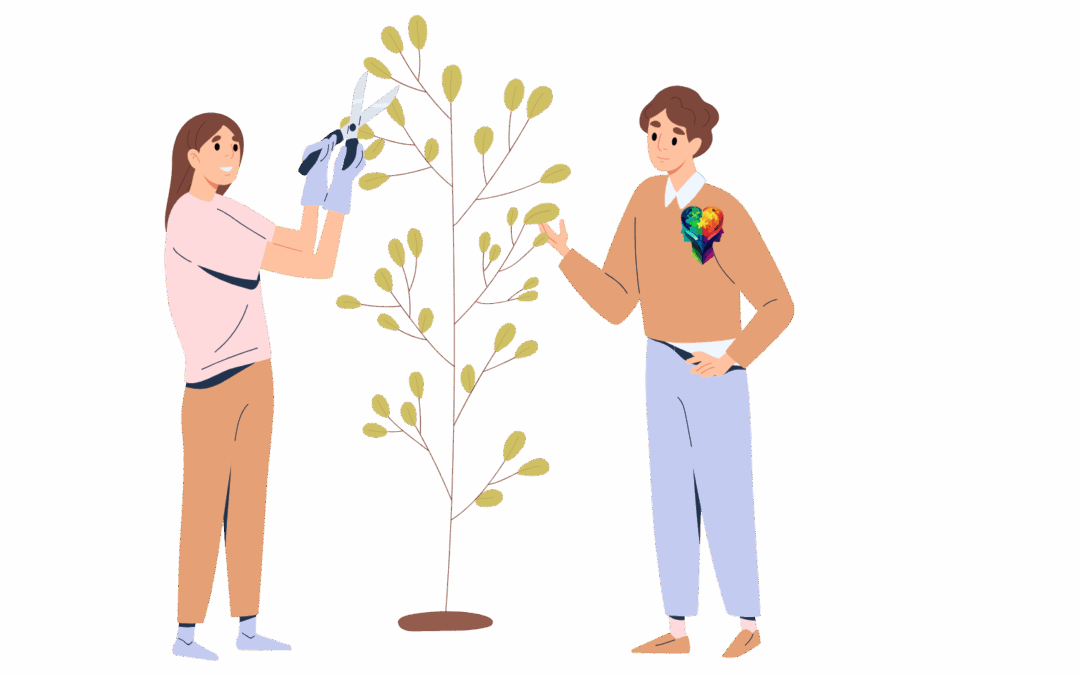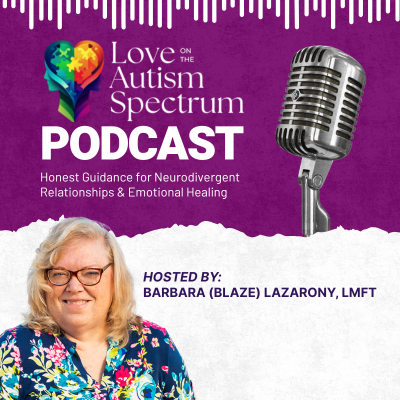What Is the Trauma Tree?
When it comes to trauma, we often focus on the symptoms that shout the loudest—anxiety, depression, relationship struggles, chronic fatigue. But what if we zoomed out and saw trauma as more than just what’s visible above ground, providing hope for a different perspective ?
Imagine a tree. From birth, the development stages of trauma begin, profoundly affecting an individual’s emotional and psychological growth.
Above the soil, we see its trunk, branches, and leaves. But beneath that, hidden from view, lies the root system—complex, tangled, and foundational. Our trauma is like that. What shows up in daily life—our emotions, behaviors, and patterns—are only the outward expressions of something deeper.
The trauma tree is a metaphor I love using in therapy because it illustrates this perfectly. It helps us understand that to truly heal in the healing process , we must go beneath the surface, down to the roots.
Key Takeaways
- The trauma tree offers a holistic metaphor for understanding how trauma forms, manifests, and influences every area of life.
- Healing isn’t just about fixing symptoms—it’s about nurturing the roots and reshaping our internal belief systems.
- Trauma-informed therapy provides the safe space needed to examine and transform the roots of trauma into opportunities for resilience and growth.
First, an Introduction to Trauma
Trauma isn’t just what happened to you—it’s what happened inside you as a result.
Trauma is often born in our early years, when we’re forming core beliefs about safety, love, and belonging. It can come from underlying causes such as neglect, abuse, loss, medical trauma, systemic oppression, or even being consistently misunderstood by parents. When these experiences go unprocessed, they shape how we see ourselves and relate to the world. The younger a person is when exposed to trauma, the higher their risk of developing trauma-related disorders, as early experiences have a profound impact on emotional and psychological development. Even if children are ‘too young to remember’ these experiences, the trauma can still have lasting effects on their emotional and psychological development.
The trauma tree helps us visualize this:
- The roots: where trauma begins.
- The trunk: how it manifests in our beliefs and coping mechanisms.
- The branches and leaves: the symptoms and behaviors others often see.
This metaphor helps us approach healing with compassion and clarity—no longer asking, “What’s wrong with me?” but instead, “What happened to me?” and “What do I need now?”
Understanding Childhood Trauma
Childhood trauma is a profound and lasting experience that can affect an individual’s life, causing a ripple effect that resonates throughout their lifetime. The impact of childhood trauma can be complex and catastrophic, leading to struggles in various aspects of life, including emotional response, relationships, and overall well-being. It is essential to understand that childhood trauma can occur at any stage of development, from prenatal to adolescence, and can be caused by various factors, including physical or emotional abuse, neglect, or loss. Recognizing the signs and symptoms of childhood trauma is crucial in providing a safe environment for healing and recovery. By acknowledging the truth about childhood trauma, we can begin to create a world where children are protected and their experiences are validated, allowing them to grow and develop into healthy, resilient individuals.
Recognizing Different Types of Trauma
Trauma can take many forms, and it is essential to recognize the different types of trauma that individuals may experience. This includes physical trauma, emotional trauma, psychological trauma, and even trauma caused by socioeconomic inequities. Each type of trauma can have a unique impact on an individual’s life, affecting their behaviors, emotions, and relationships. By understanding the various forms of trauma, practitioners can provide more effective support and create a safe environment for healing. The trauma tree model can be a helpful tool in recognizing and addressing the different types of trauma, allowing individuals to begin their healing journey and work towards recovery. It is crucial to approach each individual with empathy and understanding, acknowledging the complexity of their experiences and the impact of trauma on their life.
Recognizing Trauma
Trauma doesn’t always look like what we expect. It can hide in plain sight—in perfectionism, overachievement, emotional shutdown, or chronic people-pleasing, often causing suffering.
Some signs of trauma include:
- Emotional overwhelm or numbing.
- Difficulty trusting others.
- Avoidance of certain situations or relationships.
- Mood swings, anxiety, depression.
- Physical symptoms like fatigue or pain.
When we begin to understand trauma not as a pathology, but as a pattern—a response to overwhelming experiences and our emotional response —we can begin to unwind those patterns with compassion. However, when a brain is exposed to high levels of stress hormones, it fails to form healthy neural connections, severely influencing the child’s cognitive and emotional development.
Let’s take a closer look at the parts of the trauma tree and how each one plays a role in shaping your experience.
The Emotional Response
The emotional response to trauma can be intense and overwhelming, causing individuals to feel a range of emotions, from anxiety and fear to anger and sadness. It is essential to recognize that the emotional response to trauma is unique to each individual and can be influenced by various factors, including their childhood experiences, relationships, and coping mechanisms. By acknowledging and validating an individual’s emotional response, practitioners can create a safe environment for healing, allowing them to process their emotions and work towards recovery. The emotional response to trauma can also be affected by the trauma tree, with the roots of the tree representing the traumatic experiences and the branches representing the individual’s response to those experiences. By understanding the emotional response to trauma, we can begin to create a more compassionate and supportive world where individuals feel heard and understood.
The Anatomy of the Trauma Tree
1. The Roots: Where Trauma Begins
The roots are where our emotional story begins. These are the invisible forces beneath the surface—childhood experiences, family dynamics, and societal messages that shape our beliefs and nervous systems during our healing journey. The roots of the trauma tree represent historically significant negative life events that shape us, influencing how we grow and respond to the world around us. These early experiences can have profound long-term effects, often manifesting as challenges in adulthood.
Some common root sources include:
- Childhood trauma: Abuse, neglect, inconsistent caregiving, or emotional invalidation.
- Intergenerational trauma: Pain passed down through family systems, often unspoken but deeply felt.
- Cultural and systemic trauma: Experiences of racism, ableism, sexism, or being neurodivergent in a neurotypical world.
- Significant life events: Accidents, illnesses, losses, or sudden changes.
When roots are nurtured with care, the tree grows with strength and flexibility. But when roots are fractured by trauma, they can twist around beliefs like “I’m not enough,” “I don’t matter,” or “I must earn love.”
Real-Life Example:
Imagine a child who grows up in a home where emotions are never talked about. They learn to internalize their feelings, believing that vulnerability is unsafe. As an adult, they may struggle with intimacy or feel disconnected in relationships—not realizing these struggles are rooted deep in childhood soil.
2. The Trunk: How Trauma Manifests
The trunk connects those hidden roots to the outward world. It’s where trauma solidifies into core beliefs and coping strategies.
Examples of trauma-related beliefs:
- “I have to take care of everyone.”
- “If I mess up, I’ll be abandoned.”
- “I can’t trust anyone.”
- “I’m too much.”
And the coping strategies we develop?
- Hyper-independence
- People-pleasing
- Avoidance
- Overworking or underfunctioning
These behaviors may have helped us survive—but they also limit our ability to thrive. Many of these negative behavior patterns are learned as a result of childhood trauma, highlighting the importance of addressing these patterns through healing and recovery processes. Artificial coping efforts can interfere with true healing for clients, as they often mask the underlying issues rather than addressing them.
These behaviors may have helped us survive—but they also limit our ability to thrive.
Therapy Insight:
In trauma-informed work, we gently challenge the rigidity of the trunk. We begin to notice: “Ah, this belief that I’m unlovable didn’t start today—it started when I was 6 and my needs weren’t met.” This isn’t about blame. It’s about understanding those who have experienced trauma —and from there, transformation becomes possible.
3. The Branches: The Visible Effects of Trauma
This is what the world often sees, as depicted in many self-help book narrativ .
Branches represent the outward symptoms:
- Anxiety
- Depression
- Anger
- Chronic illness or fatigue
- Addictions
- Toxic relationship cycles
But here’s the truth: the branches are not the problem. They’re signals. Symptoms that something deeper needs attention.
Real-Life Reflection:
Think of someone who constantly sabotages their own success. On the outside, it may look like laziness or self-doubt. But when you trace it back through the trunk to the roots, you might find a childhood belief that says: “If I shine too brightly, I’ll lose love.”
When we stop blaming the branches and start getting curious about them, we begin to shift the whole system.
4. The Leaves: Day-to-Day Impact
The leaves are where trauma shows up in everyday life.
You might notice:
- Trouble concentrating
- Difficulty making decisions
- Feeling numb or shut down
- Constant overthinking
- Struggling with boundaries or self-worth
These daily symptoms are often misunderstood. But just like a tree sheds leaves when the season changes, healing is possible. The healing process involves a combination of positive and negative emotions, where individuals often carry both pain and happiness. You are not broken—you are becoming.
The Importance of Addressing the Roots
Healing doesn’t come from chopping off branches. It comes from tending to the soil. From understanding what shaped the roots, and gently rewriting the story from there.
When we tend to the roots:
- We identify patterns that have silently shaped our lives.
- We release shame, recognizing our behaviors as survival tools.
- We build new pathways—ones rooted in self-trust, safety, and agency.
This is why trauma-informed therapy matters, as it fosters a safe environment for healing.
How Trauma-Informed Therapy Can Help
1. Creating a Safe Space
Healing starts with safety, not just physical, but emotional. In a trauma-informed approach, you are seen, heard, and never rushed.
Therapists co-create this safe container by:
- Honoring your pace.
- Helping you recognize your triggers without shame.
- Teaching tools to regulate your nervous system.
Creating a safe space allows patients to express what they are feeling, fostering trust and openness in the therapeutic process.
2. Exploring the Roots
Together, you’ll explore your trauma tree with curiosity and compassion. It is essential to explain the complexities of your trauma to gain a thorough understanding of how it impacts your behavior and identity. What early experiences shaped you? What beliefs did you form? Where are you still holding on to something that no longer serves you?
This process may bring up grief—but also relief.
3. Strengthening the Trunk
As you gain insight, therapy helps you build a stronger trunk:
- You’ll challenge limiting beliefs.
- Replace survival patterns with empowered choices.
- Learn to hold boundaries with care and clarity.
4. Pruning the Branches
Coping mechanisms aren’t bad—they were brilliant adaptations. But we get to ask: Are they still serving you?
In therapy, we gently prune old habits and cultivate healthier expressions:
- Emotional regulation skills
- Communication tools
- Somatic practices for safety and connection
Rebuilding and Rediscovering Oneself
Rebuilding and rediscovering oneself after experiencing trauma can be a challenging and ongoing process. It requires a safe environment, supportive relationships, and a willingness to confront and process painful emotions. The trauma tree model can be a helpful tool in this process, allowing individuals to identify and address the root causes of their trauma and work towards healing. By rebuilding and rediscovering oneself, individuals can begin to regain control over their life, develop healthy coping mechanisms, and cultivate a sense of purpose and meaning. This journey can be difficult, but with the right support and resources, individuals can learn to heal, grow, and thrive. It is essential to approach this journey with patience, compassion, and understanding, acknowledging the complexity of the healing process and the individual’s unique experiences.
Nurturing Growth and Resilience
Healing isn’t about becoming someone new—it’s about returning to who you truly are, underneath the trauma.
To support this journey:
- Practice self-compassion. You’re doing sacred work.
- Seek community. Healing doesn’t happen in isolation.
- Celebrate the small wins. Every shift matters.
Like a tree, your growth might not always be visible, but it’s happening. The journey of healing from trauma is a growing process, where each step forward contributes to a more fulfilling life. With care, patience, and support, your trauma tree can grow strong, vibrant, and deeply rooted in your truth.
Sustaining Progress
Sustaining progress in the healing journey can be a challenging but crucial aspect of recovery. It requires ongoing support, self-care, and a commitment to continued growth and development. By sustaining progress, individuals can continue to heal, learn, and evolve, developing greater resilience and coping skills. The trauma tree model can be a helpful tool in sustaining progress, allowing individuals to monitor their growth and development and make adjustments as needed. It is essential to recognize that sustaining progress is an ongoing process, requiring effort, dedication, and patience. By prioritizing self-care, seeking support, and cultivating a growth mindset, individuals can continue to heal, grow, and thrive, creating a brighter, more hopeful future for themselves.
Conclusion: You Are Not Alone
The trauma tree shows us that healing is layered. It invites us to stop blaming the leaves and start tending to the roots. Whether your trauma comes from childhood, cultural wounding, neurodivergent masking, or something else, you are worthy of support and healing as people on this journey.
Let your tree be seen. Let it be held with care. You are not your trauma. You are the soil, the seed, and the bloom.
If you are willing, feel free to reach out to me to schedule a FREE “Clarity & Connection” Zoom session for you or you and your partner. I’m here whenever you’re ready to see in all of your glorious beauty!
Frequently Asked Questions
1. What is the trauma tree?
The trauma tree is a metaphor that illustrates how trauma takes root in past experiences and impacts thoughts, emotions, and behaviors throughout life. It emphasizes the significance of addressing these past traumas to understand current behaviors and emotional responses. It helps individuals understand the layered nature of trauma and where to begin healing. Trauma is a universally experienced emotion, affecting people across all walks of life in different ways.
2. How does trauma-informed therapy address the trauma tree?
Trauma-informed therapy helps individuals explore the roots of their trauma, shift harmful beliefs, and develop new coping strategies. It creates a safe, respectful environment where healing can unfold at your pace.
3. Does the trauma tree apply to all types of trauma?
Yes, the trauma tree can apply to all kinds of trauma, including childhood trauma, medical trauma, intergenerational trauma, and collective or systemic trauma. It offers a flexible, compassionate framework for understanding and healing.
4. How do I start exploring my own trauma tree?
Start with gentle self-reflection or journaling. If possible, work with a trauma-informed therapist. Notice your symptoms without judgment and stay curious about where they might be rooted. Your healing begins with awareness, and you don’t have to do it alone.







